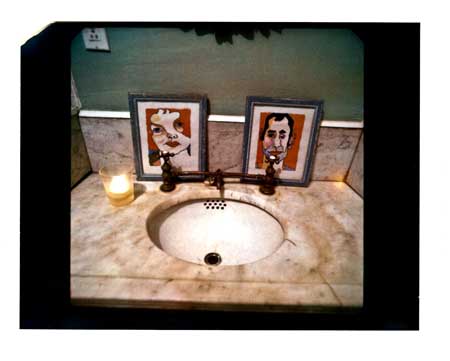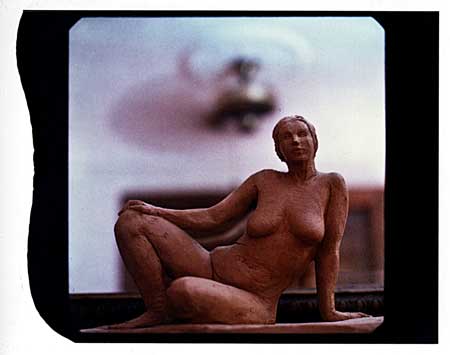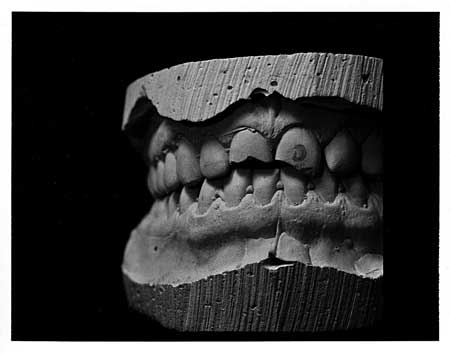Extending, reflecting and refining on the way to interesting
In December, I treated myself to something old but new, a Mamiya RZ67 ProII outfit. It is a legendary film camera with a cult following. There are many reasons to fall in love with a camera like this and I am just beginning my journey.
As a child, I remember sitting around the dinner table and discussing how the racket did not make the player. Tennis was a big deal in our house and while I knew the sentiment was true, this was the dawn of composite rackets, a move away from traditional wood frames. For me it was a conflict worth waging, because the racket was significant. The racket indeed matters, but without a competent player, it is no better than a lesser tool. The racket does not make the player, but a good tool in the right hands is magical.
Right before I found my new tool on Craigslist, I read an inspired blog post by Chase Jarvis around being successful in photography. It is always interesting to hear the secrets of successful people. People love to try to boil things down to consumable words of wisdom when in fact how someone ends up where they stand is far more complex. Nevertheless, a fantastic quote of a quote from an interview with Steve Martin.
Be undeniably good. When people ask me how do you make it in show business or whatever, what I always tell them and nobody ever takes note of it ‘cuz it’s not the answer they wanted to hear — what they want to hear is here’s how you get an agent, here’s how you write a script, here’s how you do this — but I always say, “Be so good they can’t ignore you.” If somebody’s thinking, “How can I be really good?”, people are going to come to you. It’s much easier doing it that way than going to cocktail parties.
Not only is that true, it is brilliant. I tend to be understated out of fear of being labeled arrogant, but I also enjoy seeing how other people perceive my work and me. If I were more aggressive, I would taint the viewing. I am interested in getting feedback and the best way in my mind is to let people react and then watch and listen. Be undeniably good.
In the first weekend, I shot the camera twenty times. I forgot what it was like to work with film and in this case peel-apart expired Polaroid. Everything takes time. With my Canon 30D, I can rip through hundreds of shots in an hour. My keep ratio is extremely high and I am brutal given the number of photos I am left to manage. The digital darkroom is now an extension of my mind and tweaking is effortless. We forget how much the camera and computer are doing.
My first few shots were first metered by my digital camera and then transferred to the RZ. Underexposed. Test. Underexposed. Test. Ah, the film. Then years of experience with film rushed over me. Film selection is a critical part of creating an image. Expired Polaroid peel-apart is a wild card. To further complicate things, I was metering with my Canon, which has fancy algorithms for referencing neutral gray. The lighting conditions were such that the best exposure would have been metered from an incident reading, where instead of looking at the reflected light off an object you read the light falling onto the object. Unfortunately, I was without meter and for my first weekend, compensating would have to do.
Chris Orwig, a faculty member at the Brooks Institute, was a guest writer on a wildly popular blog by Scott Kelby. Scott and team run a slick show keeping everyone in tune with Adobe products and photography. Most of their work is tool and gear focused, so inviting Chris to the show was an unexpected and genius move, because he is all about the art. Chris is a fan of quotes. It must be the educator in him.
The review [of one of Chris’ student’s portfolio] was fine, yet after it was over the student pleaded with Jay [Maisel], “Tell me, how can I take more interesting photos?†With missing a beat, Jay volleyed back, “Become a more interesting person.†Or said in another way, as Chris Rainier told me last week, “…at some point photography becomes autobiographical. In order to create better photos, sometimes we need to put down the photography books and magazines. Then we need to go out and to develop who we are.â€
Who we are, shapes what we see.
Be undeniably good. Become a more interesting person.
My setup came with extension tubes, which enable lenses to focus at very close distances, excellent for macro (micro) photography, something I dove head first into last year. My still life rested atop a mantle. Extension tubes and my 110mm lens attached to an unqualified tripod. My Canon 580EX attached to the hot shoe. Test. Underexposed. Test. Underexposed. Test. Ah, the film. Compensate for the film, the extension tubes, and the power level of the strobe light. A color print of what is essentially a black and white subject. Slipping in a pack of Fuji black and white instant film, I nailed it. Unreal. Hours go by as you shoot, wait, look, adjust and expose. Over and over again, totally engrossed in the process, frame and science. The smell of the caustic Polaroid chemicals and the fascination with even poorly exposed shots. Now I remember why it was so amazing to get 10-20% of your shots as keepers. When you shoot film, you have no choice but to wait to see what was captured. The delay is part of the process.
I had been dragging my feet on a couple of purchases, a light meter and a good support system. This new outfit requires both. They have been among the best investments I have made.
My first photography class had everyone shoot slide film. Hardly anyone shoots slides anymore. The process of looking at images projected on a wall is no longer captivating to most. What is smart about slide film is that you basically get what you shot. While there is a development process, there is no magic going on in the darkroom in creating a print. The realized image is the developed slide. Instant films are much the same way. The image only exists in one place. There is no negative. You get what you shoot. Wickedly humbling and intoxicatingly addictive.
I am already a better photographer than before my Mamiya. Bringing me back to all the inconveniences of film informs how I construct my image. Those inconveniences are the pauses that leave you only to think, feel and reflect. Hopefully one step closer on my expedition to being undeniably good. More importantly giving me another window of exploration by which I become more interesting. After all, the process of capturing images is a method by which we interpret and reinterpret our world. That journey is its own therapy.




